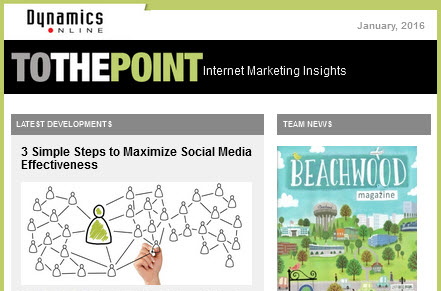Understanding Pay-Per-Click Campaigns – Part Two
Hello and welcome back!
If you’re not a returning reader and I’ve already alienated you by saying “welcome back,” fear not – I shall explain. As the above title indicates, this is Part 2 of a 3-part series on Understanding PPC Campaigns. I highly recommend you check out Part One before continuing here. Don’t worry, when you’re done, I’ll just be one click of the “back” button away.
Now – onward and upward. So you know you want your super-witty and eye-catching ads to show up on Google when people search for the products you sell. Great! It’s time to start using Google AdWords. Naturally, no one can explain the concept better than the makers themselves, so here’s a brief overview to get you up to speed:
While that did a great job of explaining this process conceptually, the practical implementation of the system can use an overview. That’s where I come in.
How to Set Up Your Google AdWords Campaign
For our purposes here, let’s say you’re the proprietor of a pet store. Lucky for you, you’ve been tasked with advertising online and not cleaning the kennels.
The structure of an AdWords search campaign is a simple hierarchy. I’ve dusted off an old high school skill and presented it here in outline form:
Campaign 1 – Pet Supplies Search Campaign
- Ad Group A – Cat Toys
- Ad #1 – Scratch Post
- Ad #2 – Stuffed Mouse
- Ad #3 – Cat Nip Ball
- Ad Group B – Dog Toys
- Ad #1 – Squeak Toy
- Ad #2 – Frisbee
- Ad #3 – Rubber Ball
Campaign 2 – Pets Search Campaign
- Ad Group A – Small Mammals
- Ad #1 – Hamsters
- Ad #2 – Gerbils
- Ad #3 – Guinea Pigs
- Ad Group B – Small Reptiles
- Ad #1 – Salamanders
- Ad #2 – Geckos
- Ad #3 – Snakes
Campaign Level
This is the umbrella under which all of your broad categories can be advertised. In this example, separating “Pet Supplies” from “Pets” allows you to dedicate a distinct budget to each category, view metrics independently (i.e. 10,000 saw our Pet Supplies ad vs. 4,000 who saw our Pets ad), and set specific geographic or demographic targets (i.e. only the state of Ohio and/or only males ages 18-34).
Ad Group Level
This is where you can break out more specific groups within your Campaign-level broad categories. I gave two examples in the outline above, but you can have a maximum of 2,000 Ad Groups per campaign – though that could get costly.
This is the level where keywords come into play. Keywords are simply the words people type into Google when attempting to find certain things. The important thing to remember with keywords is relevance. For example, in Ad Group A above, we would choose rich keywords such as “stuffed cat toys”, “cat scratch post”, or “cheap cat nip”. These are reasonable searches people may make and they apply specifically to the products you’re selling within the Ad Group.
Coming up with the best keywords can really fry your brain after a while – thankfully, Google has given us the Keyword Tool.
Ad Level
This is where your creativity – and sense of brevity – comes into play – writing the ads. Fortunately – or unfortunately, depending on how you look at it – Google has very tight restrictions on the layout of your text ad. You get 4 lines total – 25 characters for a title, 70 characters total over 2 description lines, and 35 characters for a display URL. (Oh yeah, there are also content guidelines.)
This is why you want to create ads based around specific products and have several per Ad Group so you can be sure the content is relevant to the searcher and earns their click.
So there you have it – a very, very basic overview of the practical framework behind all successful Google AdWords campaigns. Once you have this sketched out and implemented, you can set your budget, bids, and bodacious conversions in keeping with the alliterative theme. Tune in next time for an overview of these metrics, as well as all the fun things you learn after the campaign has been running for a few weeks.
Thanks for reading and happy optimizing.
Anthony Mahramus is the Internet Marketing Strategist at Dynamics Online.
You can reach him by calling (216) 292-4410.



